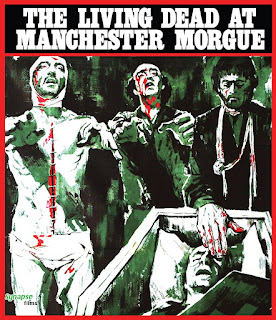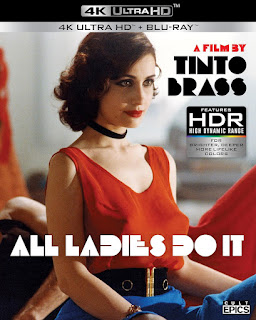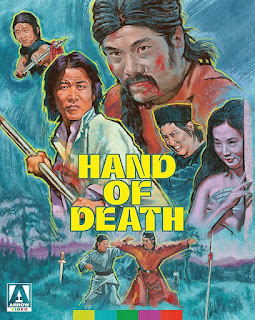The Living Dead at Manchester Morgue
The DNA of the modern zombie film has been spliced from so many different sources it requires genuine cinematic research to produce an accurate genome map. But who’s complaining? Rediscovering influential off-shoots like 1974’sThe Living Dead at Manchester Morgue (aka Let Sleeping Corpse Lie) is like unearthing all the bits and pieces that make up the zombie evolution. And director Jorge Grau’s take on the living dead is unique among its shuffling competition, mixing environmentalism, religion and a counter-culture rallying cry that’s as contemporary as it is gruesome.
Paired up by accident on a journey through the English countryside, George and Edna get mixed up in a murder that makes them the prime suspect of a hippie-hating Inspector. Determined to track down the real perpetrator, the couple discovers a pest control experiment using ultrasonic waves is resurrecting the dead bodies in the local cemetery. As they work to prevent the corpses from feasting on the local populace, their warning goes unheeded by the local authorities, farmers and scientists who only seems concerned with increasing the range of their ultrasonic device!
Making tremendous use of its bucolic setting, The Living Dead at Manchester Morgue is much more polished and cohesive than the usual euro-horror of the time, backed up by an experienced cast (Ray Lovelock has never been used better) and just enough blood and guts to live up to its title. But Grau’s film is actually reflecting the eco-horror of the time; his zombies are merely a symptom of a larger disease.
Modeled after Romero’s slow-moving ghouls, Grau’s reanimated mob comes with blood-red eyes (a cool effect copied by 28 Days Later) and the suggestion – however vague – of a collective consciousness beyond their desire for human flesh. Much like fellow Spanish director Jose Ramon Larraz’s Vampyres, produced the same year, there’s an intangible eeriness that perhaps only a foreign eye can truly capture. The film isn’t so much scary as unsettling, with a slow-burn apocalyptic vibe that seems way ahead of its time.
Appearing on Blu-ray for the second time from Synapse, now in a stripped-down version of their 6000-piece limited steelbook, the version has the same delicious transfer (a 4K restoration of the original negative), 5.1 surround remix, two audio commentaries, interviews, Q & A and a feature length documentary exploring Jorge Grau films and career. If you don’t already have this one in the library, add it ASAP.




Comments
Post a Comment